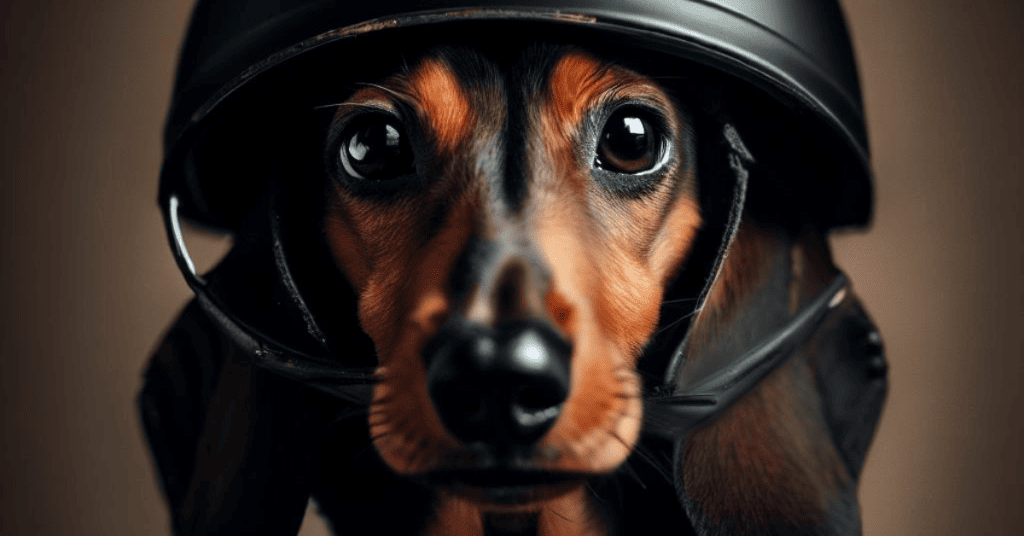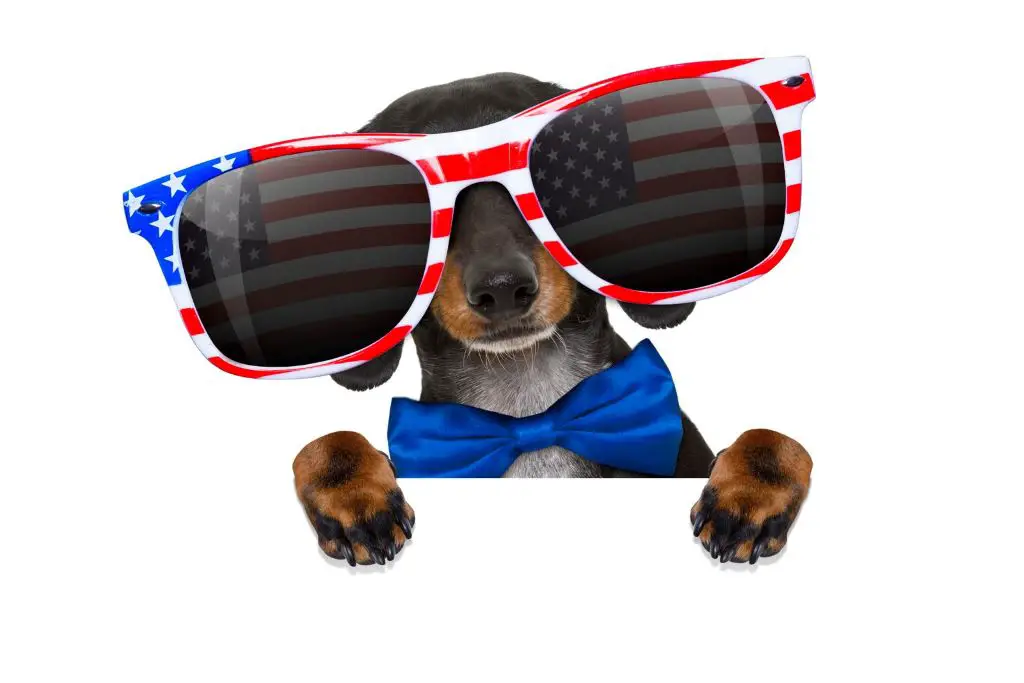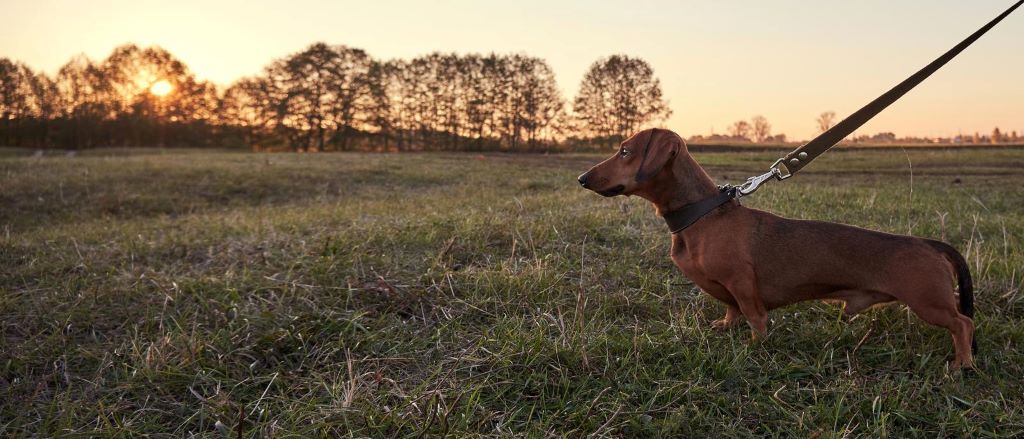You may have heard the saying ‘every dog has its day,’ but did you know that the dachshund’s day was almost cut short by the impact of World Wars I and II?
These two global conflicts had a profound effect on the popularity of this beloved breed, shaping its reputation and leaving a lasting legacy that still impacts dachshund enthusiasts today.
Like a small boat navigating through rough waters, the dachshund faced challenges that threatened its survival during the war years.
However, through perseverance, adaptation, and the efforts of dedicated breeders and owners, the dachshund emerged from the turbulence of war with a new sense of purpose and popularity that continues to this day.
In this article, we will explore the impact of World Wars I and II on dachshund popularity, examining how the breed’s reputation changed over time and what lessons we can learn from its resilience in the face of adversity.
The Pre-War Popularity of Dachshunds
The dachshund was already a beloved breed prior to the onset of World War I, with their cute and quirky appearance captivating dog lovers across the globe. The breed’s popularity was on the rise, thanks to pre-war breeding efforts that aimed to establish dachshund standards. These standards helped to ensure that the breed’s unique characteristics were preserved and maintained.
During this time, dachshunds were bred for their hunting abilities, as they were known for their exceptional scenting and tracking skills. They were also bred for their distinctive appearance, with their long, low bodies and short legs making them stand out from other breeds. As a result, dachshunds quickly became a favorite among dog enthusiasts, and their popularity continued to grow.
Despite the onset of World War I, the dachshund’s popularity remained strong. In fact, many soldiers took dachshunds with them to the front lines, where they served as loyal companions and even helped to boost morale.
The breed’s popularity only continued to soar in the years that followed, as more and more people fell in love with their unique charm and personality.
Dachshunds as Symbols of War
As symbols of both strength and vulnerability, dachshunds became poignant representations of wartime experiences. During World War I, dachshunds were vilified due to their German origins. They were seen as a threat to national security, and many were consequently killed.
However, in World War II, dachshunds were used as symbols of loyalty and courage. This is evident in propaganda posters that depicted them as patriotic dogs who supported the war effort. Wartime dachshund training was also an important aspect of their popularity during World War II.
Dachshunds were trained to perform various tasks, such as carrying messages and assisting soldiers on the battlefield. Their small size and agility made them ideal for navigating difficult terrain, and their loyalty and bravery made them valuable companions to soldiers. As a result, dachshunds became more than just pets – they were seen as integral members of the war effort.
Dachshunds played an important role in both World War I and World War II, albeit in very different ways. Their popularity fluctuated depending on the political climate, but their loyalty and courage remained steadfast. As symbols of wartime experiences, dachshunds continue to hold a special place in the hearts of many, serving as a reminder of the sacrifices made during times of conflict.
Negative Connotations and the Breed’s Popularity
It’s heartbreaking to see how negative connotations have affected the beloved breed of dachshunds, leading to misconceptions and unfair treatment.
Negative associations and breed stereotypes have plagued dachshunds since the world wars. During World War I, dachshunds were seen as a symbol of Germany, leading to a rise in anti-German sentiment, which unfortunately extended to the breed as well. Similarly, during World War II, the breed was stigmatized as a Nazi symbol.
This historical context and societal attitudes have had a lasting impact on the breed’s popularity. Dachshunds were once a popular breed in the United States, but after the world wars, their popularity declined. People started to view them as un-American and unpatriotic, leading to a decrease in demand for the breed.
This negative association also led to the mistreatment of dachshunds, with some people even abandoning or abusing them.
Despite these challenges, dachshund lovers have persevered in promoting the breed’s positive attributes. They’ve emphasized their loyalty, intelligence, and playfulness, proving that dachshunds are much more than just a symbol of war.
Through education and advocacy, we can help others appreciate the breed for what it truly is – a beloved companion that deserves love and respect.
Attempts to Restore Dachshund Popularity
You might be interested to learn about the attempts made to restore the dachshund’s popularity after the world wars.
Popularity fluctuations in the post-war years were significant, and cultural and political influences played an important role in shaping the breed’s image.
Despite the challenges faced by the dachshund, various efforts were made to reintroduce it to the public and showcase its unique qualities.
Popularity Fluctuations in the Post-War Years
Throughout the post-war years, dachshund popularity experienced ups and downs, following the adage ‘what goes up must come down.’ After the war, the breed’s popularity dipped due to the changing lifestyles of people. Instead of having a loyal companion, people wanted dogs that could perform specific functions such as hunting or guarding. This led to a shift in breeding practices, with breeders producing dogs that fit the new demands of the market.
However, dachshund breeders didn’t give up easily. They launched advertising campaigns to promote the breed’s unique features such as their loyal and affectionate nature. Despite the efforts of breeders and advertisers, the popularity of dachshunds continued to fluctuate.
In the 1950s, the breed’s popularity soared again with the introduction of the Disney character ‘Lady and the Tramp.’ The film portrayed the dachshunds as cute and lovable, and the public fell in love with them once again. However, this popularity was short-lived, and by the 1960s, the breed fell out of favor again.
It wasn’t until the 1970s that dachshund popularity stabilized, and the breed became a favorite among families once more.
Cultural and Political Influences
As you reflect on the cultural and political landscape of the mid-20th century, imagine the influence it had on the status of the beloved sausage dog. The aftermath of World War II brought about significant changes in the way people perceived dogs. Dachshunds, being a German breed, were initially viewed with suspicion and disdain. However, as time went on, they gradually gained acceptance and even became a symbol of peace and reconciliation between nations.
Cultural influences played a significant role in the popularity of dachshunds during this period. The rise of suburban living and the emergence of the nuclear family created a demand for smaller dogs that could adapt to apartment living. Dachshunds, with their compact size and playful nature, fit the bill perfectly. Political factors also played a role, as the breed’s association with Germany made them a target of anti-German sentiment in the years following the war. However, as attitudes towards Germany softened and the breed’s charming personality became more well-known, dachshunds gained widespread popularity and continue to be a beloved breed to this day.
Modern-Day Dachshund Popularity
Nowadays, the lovable dachshund is a household favorite, often seen strutting around with their comically long bodies and wagging tails like a little circus performer. These furry friends are not just adorable, but also make great companions due to their loyal and affectionate nature.
Dachshund ownership has been on the rise since the mid-20th century, and it’s not hard to see why. Here are a few reasons why dachshunds are so popular today:
• They’re low-maintenance dogs that don’t require much exercise or grooming.
• Their small size makes them an ideal pet for those living in apartments or with limited space.
• Dachshunds are known for their playful and curious personalities, making them great with children and other pets.
• The breed’s unique appearance and quirky personality have made them a popular subject in movies, TV shows, and advertisements.
If you’re considering getting a dachshund, it’s important to understand their breed characteristics. These dogs are known for their stubbornness and independence, which can make training a bit of a challenge. However, with patience and consistency, dachshunds can be trained to be well-behaved and obedient pets.
The dachshund’s popularity has only continued to grow in recent years due to their adorable appearance and friendly personality. They make great companions for those seeking a low-maintenance pet that is great with children and other pets. If you’re willing to put in the effort to train them, a dachshund can be a loyal and loving addition to your family.
Lessons Learned from the Impact of World Wars on Dachshund Popularity
You might be surprised to know that the history of dachshunds includes some surprising lessons learned from the events of the past century. One of the most significant events that impacted the popularity of this beloved breed was the world wars. During the first and second world wars, dachshunds were associated with Germany, and their popularity plummeted in the US and other countries involved in the conflict. However, after the wars, dachshund lovers worked diligently to rehabilitate the breed’s reputation and restore its popularity.
The rehabilitation of the dachshund breed was not an easy feat. It required a significant shift in marketing strategies to change the public’s perception of the breed. Dachshund breeders and enthusiasts started to highlight the breed’s endearing qualities, such as their loyalty, intelligence, and playfulness. They also began to showcase the breed’s versatility as a hunting dog, family pet, and even a show dog. These marketing strategies were highly successful, and within a few years, the dachshund breed regained its popularity.
Today, the dachshund breed is still one of the most popular in the world, and its history serves as a reminder of the impact of war on society, including our beloved pets. The lessons learned from the dachshund breed’s history provide valuable insights into the power of marketing strategies and the importance of breed rehabilitation. As we move forward, we can learn from the mistakes of the past and continue to work towards a better future for not only dachshunds but all breeds of dogs.
Frequently Asked Questions
What is the origin of the Dachshund breed?
Did you know that the dachshund breed originated in Germany over 600 years ago? Their evolution from hunting dogs to beloved family pets is a testament to their loyalty and adaptability.
How did Dachshunds become associated with Germany and the World Wars?
Did you know that dachshunds are deeply rooted in German culture? Their popularity in post war America was due to soldiers bringing them home as souvenirs. Learn more about their history and significance.
Did soldiers in World War I and II actually use Dachshunds for military purposes?
You may have heard Dachshund myths about their use in wars, but the truth is that they were not used for combat. However, some Dachshund breeds did serve as messengers and mascots in the military.
Are there any health concerns specific to Dachshunds that may have affected their popularity?
If you’re considering a dachshund, it’s important to know about their breed health concerns. Back issues, dental problems, and obesity are common. These issues likely impacted their popularity, but they’re still beloved by many.
Have there been any notable Dachshund owners or enthusiasts throughout history?
You’ll be fascinated to know that famous owners of dachshunds include Picasso, Queen Victoria, and John F. Kennedy. These pups have also been depicted in cultural icons like the 1960s cartoon, The Jetsons.
Conclusion
So, what can we learn from the impact of world wars on dachshund popularity?
Firstly, it’s clear that external factors beyond our control can significantly impact the popularity of a breed. The negative connotations associated with dachshunds during the wars were not the fault of the breed itself, but rather a result of their use as symbols of the enemy.
However, we can also see that with time and effort, a breed’s popularity can be restored. The dachshund’s decline in popularity after the wars was not permanent, and through strategic marketing efforts and breed promotion, dachshunds have once again become a beloved household pet.
This serves as a reminder that we should not judge a breed based on external factors, and that with patience and perseverance, any breed can regain its popularity.









